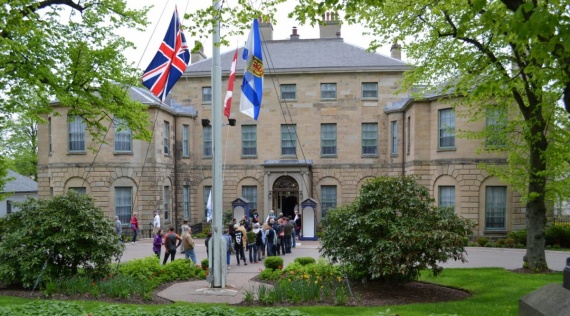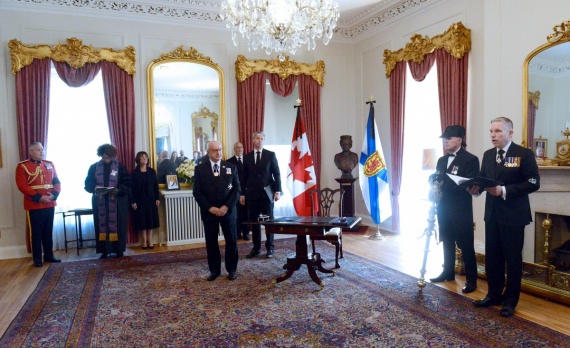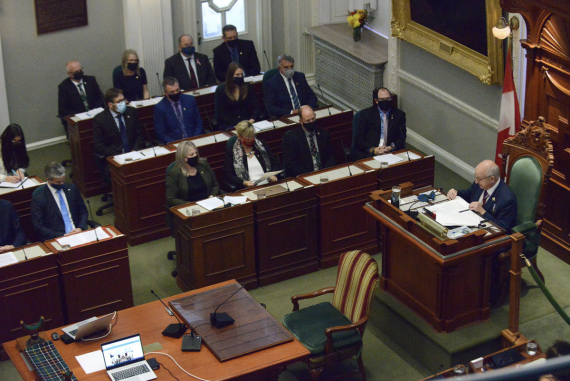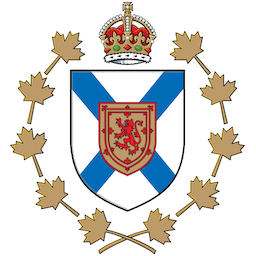175th Anniversary of Responsible Government in Nova Scotia
Although Responsible Government had been operating in Britain since the reign of King George III, it was not exported to Britain’s overseas territories until 1848.
Nova Scotia led the development of democracy in Canada. With the arraignment of representative government in 1758, and then in 1848 the achievement of responsible government, the Crown and by extension, the Lieutenant Governor, played a central role in the development of our system of government.
The change to responsible government was revolutionary. The transition laid the foundation for the kind of government we have today, not only in Nova Scotia, but in all of Canada’s provinces and federal government.
Formation of Responsible Government
Nova Scotia's transition to responsible government is often called a "paper revolution" because change came without violence, through elections and parliamentary process. Ultimately, responsible government moved power from officials who were appointed by and responsible to the British government, and gave it to the people of Nova Scotia.
The transition to responsible government took place over 90 years. Below is a summary of key events in the decade leading up to responsible government in Nova Scotia. The information is from research compiled by the Legislative Library. Please view the Legislature's website to view the full history of responsible government in the province.

1838
- Nova Scotia’s constitution was amended.
- His Majesty’s Council was split into the Legislative Council and the Executive Council.
- The Government now consisted of a Lieutenant Governor appointed by the British Government, the Legislative Council, the Executive Council, and the elected House of Assembly.
1839
- The British Colonial Office sent a message to the Lieutenant Governor communicating that the colonial government should reflect the local public opinion as much as possible.
- Reformers believed this message indicated that the British wanted Responsible Government in Nova Scotia.
1840
- The House of Assembly voted “no confidence” in the Executive Council and asked the Lieutenant Governor to dissolve it.
- When the Lieutenant Governor refused, members supporting reform voted to ask Her Majesty the Queen to remove the Lieutenant Governor from his position.
- The Lieutenant Governor resigned and the British Government agreed to include a number of reformers on the Executive Council.
1840 – 1847
- Two political parties formed: Reform, later becoming the Liberals, and Conservative.
- During the election of 1847, the Liberal Party promised to bring responsible government to Nova Scotia.
- The Liberal Party won the election and began the transition to responsible government.
1848
- January 26: The Liberal majority House of Assembly passed a no confidence motion stating that the current Executive Council, made up of Conservatives, did not have the support of the Assembly. The Executive Council resigned.
- January 28: Lieutenant Governor Sir John Harvey accepted the resignation of the provincial cabinet.
- February 2: Sir John Harvey met with nine members of the House of Assembly in the Drawing Room at Government House. The members were: James B. Uniacke, Michael Tobin, Hugh Bell, Joseph Howe, James McNab, Herbert Huntington, William F. DesBarres, Lawrence O’Connor Doyle and George R. Young. Each of the nine were sworn in as members of the provincial cabinet and Sir John Harvey administered the Oath of Allegiance. This moment marked the first responsible government in what is now Canada.

Government House and Responsible Government
As The King’s home in the province and the residence of the Lieutenant Governor, Government House continues to be the place where various aspects of the Crown’s role in our system of government frequently take place.

Each year, the Lieutenant Governor, as the Crown’s representative in the province, hosts a meeting of the provincial cabinet, thereby bringing the main actors in our system of responsible government to the place where our system of democracy was first practiced. Between these meetings, the Clerk of the Executive Council has an audience with the Lieutenant Governor to review necessary state papers, which are an integral part of the operation of our democracy.


Following the demise of the Crown, it has also been tradition for the new Sovereign to be proclaimed and for all those holding Crown offices to swear an Oath of Allegiance to the new Sovereign at Government House. This historic ceremony took place at Government House on 10 September 2022 to announce the accession of King Charles III, King of Canada, which formally announced the passing of Her Late Majesty Queen Elizabeth II.
To learn more about the Accession Proclamation Ceremony or view photos from the event, please click here.

The Role of the Lieutenant Governor in Responsible Government
As a constitutional monarchy and federal parliamentary democracy, the head of state is The King of Canada, who is represented at the federal level by the Governor General, and in each of the ten provinces by a Lieutenant Governor. Each lieutenant governor is appointed by the Governor General and by a commission issued in the name of The King, all on the advice of the prime minister.
The Lieutenant Governor is the oldest position in our legislature and is secured through the Constitution Act, 1867 and the Constitution Act, 1982. The individual holding the position is the representative of the British Crown in Nova Scotia and is responsible for carrying out legal/constitutional duties, along with ceremonial/social duties.

The Lieutenant Governor is an integral part of the legislature, without whom no business can be transacted and no bills transformed into law. In this capacity, the lieutenant governor carries out the following duties: grants royal assent; approves orders in council; summons, dissolves and prorogues the legislature; and swears in ministers of the Crown (members of the Cabinet).
- Appoints members of cabinet after they have been chosen by the premier
- Summons, dissolves and prorogues the legislature
- Swears in ministers of the Crown (members of the Cabinet)
- Gives Royal Assent to bills so that they become laws
- Ensures there is always a premier in Nova Scotia
- Gives the Speech from the Throne at the opening of each new session of the House

The current Lieutenant Governor is His Honour the Honourable Arthur J. LeBlanc, ONS, KC. He was installed as the 33rd Lieutenant Governor of Nova Scotia on 28 June 2017. Notably, His Honour is the first Acadian to hold the position of Lieutenant Governor in Nova Scotia.
Citations
Online Resources:
- The History of Responsible Government in Nova Scotia, Nova Scotia Legislature
- Parliamentary Democracy in Nova Scotia: How It Began, How It Evolved
- The History of Government House
- The History of Governors and Lieutenant Governors of Nova Scotia
- Nova Scotia Archives
Print Resources:
- Government House Halifax: A Place of History and Gathering by Christopher McCreery
